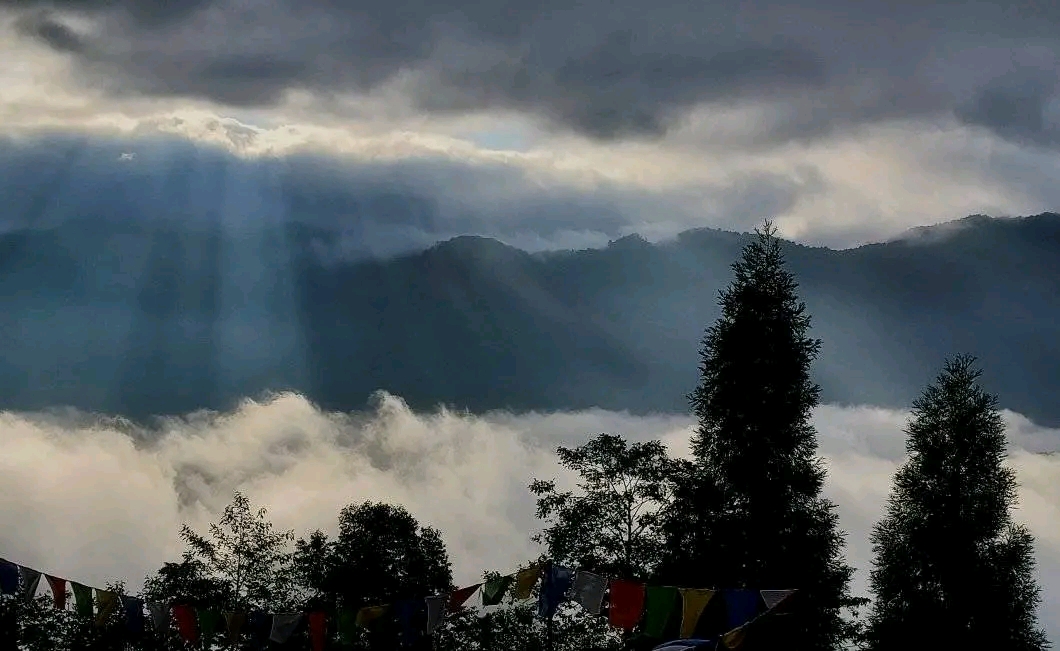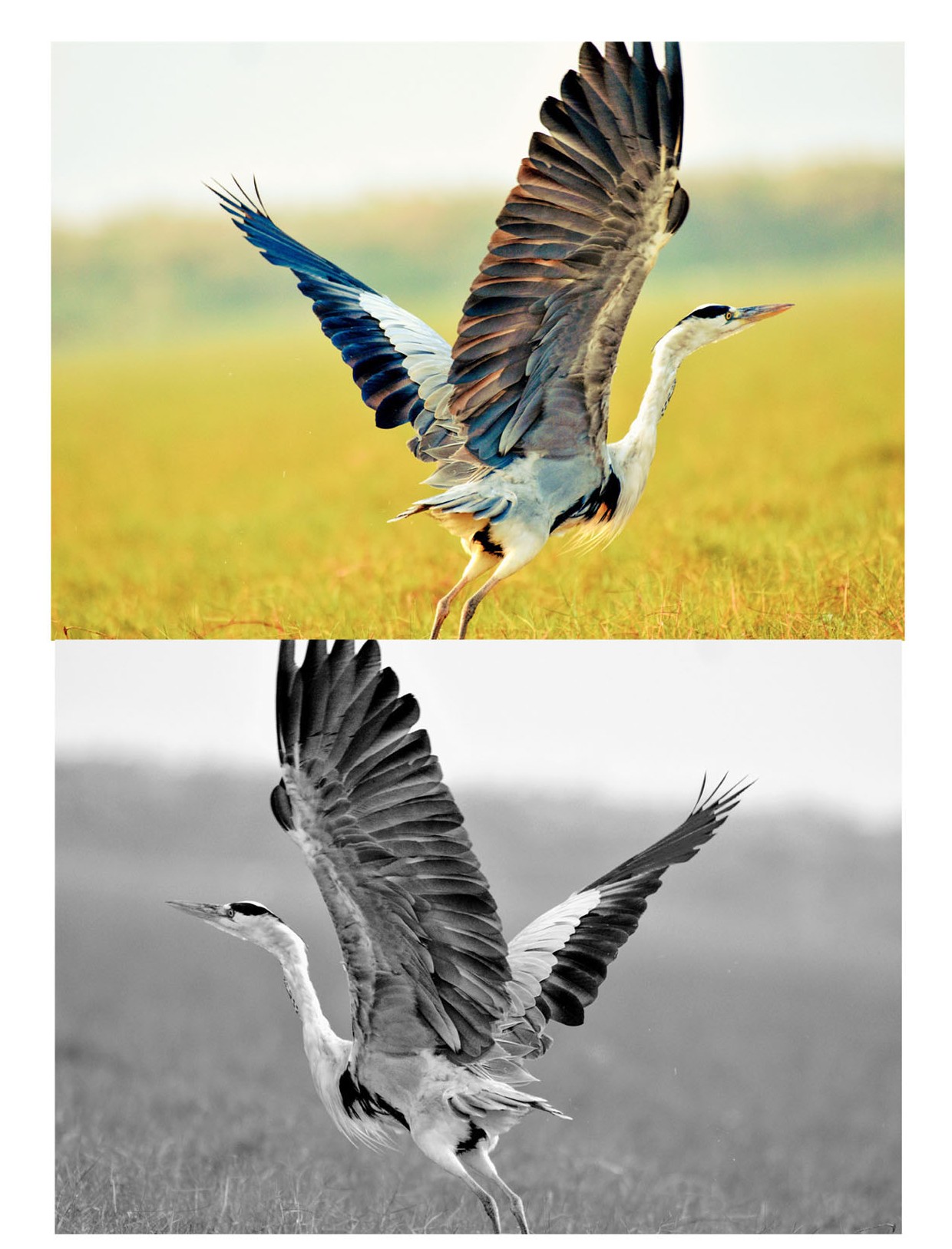Unhurried Days @ Rishop
The world was too much with us.
So, in July 2023, we set forth for Rishop in North Bengal.
My goal: to dump stress and breathe fresh air; His aim: birding, and to breathe fresh air;
Joint objective: to get away from the cacophony and enjoy a few quite moments in the hills.
It was monsoon and all national parks and wildlife sanctuaries were closed to visitors. It was the breeding season and nature was busy nurturing it's young. We tapped into our network and booked a room at Passerine Retreat Birding Lodge Rishayp and off we went on a Friday night. Kanchan Kanya, from Sealdah to New Mal Junction, arrived on time at the destination, and from there we hopped into a cab. Meandering through hilly roads we reached Rishop. The final 5 kms to the homestay were to be either treaded on foot or covered with a different vehicle. The cab owner, Tshering da, moved us to his Bolero, for only that 4x4 could cover the final stretch. It was a treacherous, adventurous path, bumpy, slippery, rocky and overlooking deep forests below.
The room was ready. There were 02 single beds, a table with a bottle shelf, windows that opened to the forest outside and 1 attached bathroom. Incidentally we were the only 02 visitors at that time. So, we practically had the entire homestay to ourselves. The host family lived in the ground floor. There was a kitchen with an adjoining rooms a small porch full of blooming succulents and hill plants, a large, open-air dining area. Rocky stairs beside the dining area led to a small vegetable patch below. Brocolli, cabbage and a few other vegetables grew in it.
Birding had already commenced, with 3 lifers on the way to Rishop: Red-billed Leiothrix, a personal favourite, Black-headed Shrike Babbler, and Blue-tailed Minla.
The next morning, even as I turned on my side, still sleepy-eyed, I could hear the husband moving outside. He was up, much before the sun and the birds. I opened my eyes as he walked into the room and parted the curtains at the window just a little. There on the ledge sat a tiny bird- a Chestnut-tailed Nuthatch. I could only steal a glance before it flew away to a tree behind the room. Caught in a dilemma, I decided to sleep on it some more. At about 8 am, I was ready to take my first photo. Right outside the room, at the corner of the 1st floor, was a balcony. Beyond it lay the Rishiyam Forest. And within the forest and it's outer edges, lived birds in a siezeable numbers. Never before had I experienced the luxury of clicking bird photos while sitting in a chair, my feet up on a wooden bench, a cup of hot coffee on the breakfast table and restless birds slipping in and out of view.
First, it was a Rufus Sibia.
Then, a Chestnut-headed Laughing Thrush. Then, a Red-tailed Minla, a White-tailed Nuthatch, a Rufus-capped Babbler, and a Grey Treepie. And mind you, they were not the only ones of their species. As my eyes grew accustomed to the light and the uncountable shades of green, more and more birds became visible: Lesser Cuckoo, Wedge-tailed Pigeon, Shrike Babbler, Crimson Sunbird, Sikkim Treecreeper, White-throated Laughingthrush, Red-billed Leiothrix and Whiskered Yuhina.
Someone who has not seen rain on wooded hills can't perhaps fathom the beauty and terror of it. It rained that night, and the night after, in torrents. Unchecked, unbound, unbroken spells of rain just fell on the forest, and slipped down to the tea gardens much below. There was no thunder, no lightening, just rainwater, gushing down from all sides. I decided that it was the perfect moment for the stress to wash away. It was dark outside the room. All of Rishop sat in silence. Our hosts had prepared dinner, and somehow managed to send it up to our room, for which we were much grateful.
The rain fell on the tin roof, the wooden balcony, the concrete dining area, the trees of Rishyam, the mud tracks of the village, the cows, goats and sheep in their pens, the slippery stone path leading up to the homestay and on all living beings, both asleep and awake. The next morning we learned that further down in Siliguri, many cabs were stuck for the night and couldn't return home.
As morning came, it was time for Birding Round 2. That day we took a few cautious steps inside the Rishyam forest. Local villagers told us how bears from inside the forest would come to chew on tender bamboo shoots in spring and that we shouldn't go too deep into the forest. We found a stick and decided to that, as well as the tripod stand, as tools to look around the grass for leeches and snakes.
Early next morning we bid adeau to Rishop and made our way down to Rongtong. The weather began to change and warm up. By noon we were at Rongtong and at Peter Beck's Hotel Rongtong.
At breakfast the next morning, our list if Lifers got bigger with new 2 new inclusions: Necklaced Laughing Thrush sp., and and Yellow-naped Woodpecker. Soon it was time to go up the tea gardens of Rongtong. As Biswajit and Peter walked further and further down a slope to snap Yellow-vented Flowerpeckers, I stayed back and guarded the van, and from inside it spotted Large Cuckoo-shrike, Bronze Drongo, Great Barbet, Shikra, Crested Serpent Eagle and a host of egrets. After the duo returned triumphant, the party lay waiting for another gem, the Asian Emerald Cuckoo.
Arriving fashionably late, the cuckoo jumped up and down branches, caught a caterpillar, dropped it, caught it again and feasted on it. Everyone standing below got busy, taking snap after snap until it flew away. At a little distance, were a pair of Great Hornbills. Thick, double-bills and a great wingspan made Great Hornbills look quite majestic.
Yet, we were waiting for something else, something that we didn't get in the last trip to Rongtong: the Collared Falconet. The smallest of the Falcon family, a Collared Falconet had built a nest by the road and enthusiasts were slowly gathering. Cars began to line up and cameras were getting put up at the right angles.
I looked at them and then turned to Biswajit. His reassuring smile reminded me why were there. So we waited. And soon there were not one but three Collared Falconets at a distance. I zoomed in, and tried to click a few good shots. Is it just me, or do the settings go awry when trying to photograph a much-awaited bird? Anyway, once that part was over, we drove further up. It was time for 2 more Lifers: Jerdon's Baza, and Black Baza, with its quintessential tufted feathers on the head.
Also, we found peacocks perched on branches above tea shrubs or taking a stroll among them. The crowning glory was the Grey-backed Pygmy Woodpecker.
It was an embarrassment of riches we weren't prepared to receive. Later, the final counting revealed we had spotted an astounding 43 Lifers in a single trip. The only downside was the trip had come to an end and it was time to go back. But I will return. Once is just not enough.

























Comments
Post a Comment